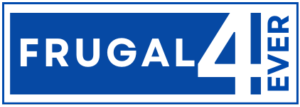In the ever-evolving landscape of online business, the choices we make can either pave the path to prosperity or lead us down the road to uncertainty. As the owner of Frugal4Ever.com, a blog dedicated to helping you unlock the secrets of passive income, I've personally witnessed how the decisions we make about the products we offer and the suppliers we collaborate with can be the cornerstone of our financial success.
Now, let me share a fact that underscores the gravity of these choices: According to a study by Statista, e-commerce sales are projected to reach a staggering $6.54 trillion by 2023. That's an enormous market waiting to be tapped into, and your success in this arena hinges on the products you select and the suppliers you partner with.
Imagine this scenario: You stumble upon a product idea that seems promising. You excitedly set up your online store and invest time and money, but soon realize that the supplier you chose delivers shoddy products or fails to meet your demand. Your dream of passive income starts to crumble.
On the flip side, picture this: You meticulously research your niche, carefully select products in high demand, and forge strong relationships with reliable suppliers. Your customers receive top-notch products promptly, and your passive income soars.
This article is your compass in this vast e-commerce landscape. It's your guide to choosing products and suppliers wisely, backed by facts and real-world statistics. I'll share actionable tips, personal insights, and a relatable story to help you make informed decisions.
But before we dive into the details, let's not forget the power of visuals. At this point in the article, you can consider adding an image or infographic depicting the exponential growth of e-commerce sales. You can place this image right here to capture your readers' attention and drive home the importance of the topic.
Now, let's embark on this journey together, where the right choices can transform your passive income dreams into reality. But remember, the success stories in e-commerce are often written by those who choose their products and suppliers wisely.

Understanding Your Niche
In the world of passive income, the first critical step is understanding the significance of niche selection. Your chosen niche is the foundation upon which your online business is built, and it plays a pivotal role in your journey toward financial freedom.
Consider this fact: According to a survey by Oberlo, 42% of online shoppers worldwide prefer to purchase products or services from stores that specialize in their specific niche. This statistic alone highlights the importance of catering to a well-defined audience.
Let's delve into this further by exploring examples of profitable niches. Take, for instance, the fitness niche. People are increasingly health-conscious, and this niche offers a plethora of opportunities. In 2020, the global fitness app market was valued at $3.5 billion, and it's projected to grow at a CAGR of 21.6% from 2021 to 2028, according to Grand View Research.
How do you identify a niche that resonates with your target audience? It starts with your passions and expertise. Think about what you love and what you're knowledgeable about. Consider the problems you can solve or the needs you can address. Conduct surveys or research to understand your potential customer's pain points.
To assist you in this journey, here are some resources for niche research tools and market analysis:
- Google Trends: Explore trending topics and discover niche ideas.
- SEMrush: Analyze competitor data and uncover lucrative niches.
- NicheHacks: A comprehensive resource for niche research and ideas.
- Statista: Access market statistics and trends for various industries.
Researching Potential Products
Once you've identified your niche, the next step in your passive income journey is researching potential products that can propel your online business forward. This process is the heart of your e-commerce strategy and involves several key aspects.
To start, delve into your chosen niche. Understand its intricacies, the pain points of your potential customers, and their buying behaviors. Then, consider the significance of demand and competition analysis. According to a report by Statista, 73% of online shoppers check the availability of products before making a purchase. This highlights the critical role of product demand.
Let's illustrate this with a real-life example. Imagine you're exploring the beauty and skincare niche. Through thorough research, you discover that organic and cruelty-free beauty products are gaining immense popularity. You also find that there's a growing demand for sustainable packaging.
Armed with this knowledge, you decide to source and promote organic skincare products with eco-friendly packaging. Your research has already set you on a path to success by tapping into a niche within a niche, catering to environmentally conscious consumers.
Where can you find the tools to conduct effective product research and analysis? Here are some valuable resources:
- Jungle Scout: A comprehensive tool for Amazon product research and market analysis.
- Helium 10: Offers a suite of tools for product research, keyword research, and competitor analysis.
- Terapeak: eBay's official research tool for eBay sellers, providing insights into product trends.
- Google Trends: Analyze the popularity of search terms and identify rising trends.
Evaluating Suppliers
Reliable suppliers are the backbone of your online business. They can make or break your venture into the world of passive income. Understanding their crucial role and knowing how to evaluate potential suppliers is essential for your success.
First and foremost, let's emphasize the pivotal role suppliers play. According to a study by Business2Community, 88% of consumers are less likely to return to an online store after a bad delivery experience. This underscores the importance of reliable suppliers in ensuring customer satisfaction and repeat business.
When assessing potential suppliers, several factors come into play. Price, quality, and reliability are key considerations. While it might be tempting to opt for the cheapest supplier, keep in mind the old adage, “You get what you pay for.” Low prices can sometimes translate into inferior product quality and unreliable service.
Here are some personal tips on how to spot trustworthy suppliers:
- Check Reviews and Ratings: Look for reviews and ratings from other businesses that have worked with the supplier. Online marketplaces like Alibaba and Amazon often provide this information.
- Ask for Samples: Request product samples to evaluate quality before committing to a larger order. This can help you gauge the supplier's product standards.
- Communication Matters: Pay attention to how responsive and communicative the supplier is. Clear and prompt communication is a sign of professionalism.
- References: Don't hesitate to ask for references from the supplier's past or current clients. Contacting these references can provide valuable insights into their reliability.
Now, where can you find these trustworthy suppliers? Here are some reputable platforms for sourcing suppliers:
- Alibaba: A global platform that connects you with a wide range of suppliers and manufacturers.
- ThomasNet: A comprehensive directory of suppliers and industrial manufacturers in various industries.
- WorldWide Brands: A source for certified wholesalers and drop shippers.
- SaleHoo is a directory of verified suppliers and drop shippers, especially for small businesses.
Balancing Quality and Cost
One of the most delicate tightropes to walk in the world of online business is finding the perfect equilibrium between product quality and cost. It's a challenge that can significantly impact your journey towards long-term passive income.
Let's start by understanding why this balance is so crucial. According to a study by Forrester, 73% of consumers say that the quality of a product is the most important factor influencing their purchasing decisions. Quality matters because it directly affects customer satisfaction, repeat business, and brand reputation.
Now, how can you achieve this balance while keeping costs in check? Negotiation is key. When dealing with suppliers, consider these strategies to secure the best deals:
- Volume Discounts: Explore the possibility of discounts for larger orders. Suppliers often offer better rates for bulk purchases.
- Payment Terms: Negotiate favorable payment terms. For example, you might discuss extended payment terms or early payment discounts.
- Long-Term Relationships: Building strong, long-term relationships with suppliers can lead to preferential pricing and better deals over time.
- Quality Assurance: Communicate your commitment to quality and work with suppliers to meet quality standards consistently.
Investing in quality can pay off handsomely in the realm of passive income. Consider this example: In a BigCommerce survey, 25% of respondents said they would pay more for a product if it came with higher customer service. This demonstrates that customers are willing to invest in quality and are likely to become loyal buyers.
By offering superior quality products, you can command higher prices and generate positive word-of-mouth marketing, leading to increased sales. Remember, the initial cost may be higher, but the long-term returns make it a sound investment in your passive income journey.
Dropshipping vs. Stocking Inventory
When it comes to managing your online business, one crucial decision you'll face is whether to embrace dropshipping or stock inventory yourself. Each approach has its pros and cons, and understanding them is vital for making the right choice in your passive income journey.
Let's start by comparing and contrasting the two:
Dropshipping
Pros:
- Low upfront costs: Minimal investment is required since you don't need to purchase and store inventory.
- Low risk: You only pay for products after you've made a sale, reducing the risk of unsold inventory.
- Wide product selection: You can offer a variety of products without the constraints of physical storage.
Cons:
- Less control: You rely on third-party suppliers for product quality and fulfillment.
- Lower profit margins: Competition can drive prices down, impacting your profitability.
- Shipping complexities: Delivery times and potential supplier errors can affect customer satisfaction.
Stocking Inventory
Pros:
- Full control: You have control over product quality, packaging, and shipping.
- Potential for higher profits: Buying in bulk can lead to better profit margins.
- Branding opportunities: You can customize your products and packaging to build your brand.
Cons:
- Higher upfront costs: You need to invest in purchasing and storing inventory.
- Inventory management: Overstocking or understocking can pose challenges.
- Risk of unsold inventory: Slow-moving products can tie up capital and space.
So, which approach is more suitable for your situation? Dropshipping may be ideal if you're starting with limited capital and want to test the waters. On the other hand, stocking inventory can be advantageous if you're confident in your product selection and want greater control over quality and branding.
Here are case studies of successful online entrepreneurs who have thrived using both methods:
- Oberlo: An example of a successful dropshipping business that integrated with Shopify.
- Gymshark: A case study of a brand that stocked inventory and grew to prominence in the fitness apparel industry.
For those interested in exploring these approaches further, here are some resources for dropshipping and inventory management tools:
- Shopify Tools: Offers a range of resources for both dropshipping and inventory management.
- Oberlo: A platform that simplifies the process of dropshipping.
- TradeGecko: An inventory management and order management software.
Building Strong Supplier Relationships
One often underestimated aspect of running a successful online business is the importance of nurturing strong relationships with your suppliers. These relationships can be the linchpin of your passive income journey, leading to mutual benefits and long-term success.
Let's dive into why these relationships matter. Consider this: According to a report by Supply Chain Quarterly, companies with strong supplier relationships experience lower costs, better quality control, and greater supply chain efficiency.
Personal experiences and stories of bloggers can shed light on the tangible benefits of strong supplier relationships. Take, for instance, the story of Sarah, a blogger in the fashion niche. She secured exclusive deals and customized designs by nurturing a close relationship with a clothing manufacturer. This set her online store apart and led to increased customer loyalty and higher passive income.
Now, how can you build and maintain such relationships effectively? Here are some tips for effective communication and collaboration with suppliers:
- Open Communication: Maintain transparent and open lines of communication. Share your business goals and expectations with your suppliers.
- Timely Payments: Pay your invoices promptly and reliably. Consistent payments build trust with your suppliers.
- Feedback Loop: Provide constructive feedback to help suppliers improve. Likewise, be open to their feedback to enhance your partnership.
- Long-Term View: Approach supplier relationships with a long-term perspective. Consider how you can grow together over time.
To assist you in managing and nurturing your supplier relationships, here are some resources:
- Supply Chain Digital: Offers insights and best practices for supplier relationship management.
- Supply Chain Management Review: A publication focused on supply chain strategies, including supplier relationships.
- Zoho Inventory: A tool for inventory management that can help streamline your supplier interactions.
Handling Supply Chain Challenges
While the journey to passive income through online business can be rewarding, it's not without its share of supply chain challenges. These hurdles can test your resilience, but with the right strategies, you can navigate through them successfully and emerge stronger.
Let's delve into some common supply chain challenges and effective ways to overcome them:
1. Shipping Delays: Unforeseen circumstances, such as weather disruptions or customs issues, can lead to shipping delays. To address this, consider diversifying your shipping methods and carriers. It's also wise to communicate proactively with customers about potential delays and offer alternative solutions, if possible.
2. Product Shortages: Running out of stock can lead to missed sales opportunities. To prevent this, maintain a buffer stock level and employ demand forecasting tools to anticipate surges in demand. Work closely with suppliers to ensure a steady supply of products.
3. Quality Problems: Ensuring consistent product quality is vital for customer satisfaction. Regularly inspect products upon arrival and establish quality control processes. When quality issues arise, address them promptly with your supplier and consider implementing a returns and refunds policy.
Now, let's explore crisis management in the context of supply chain disruptions. One key aspect is having a well-defined contingency plan. For example, you might have backup suppliers ready to step in during emergencies. Communication is also crucial—keeping customers informed during disruptions can help maintain trust.
Additionally, consider investing in supply chain management tools and courses to equip yourself with the necessary skills and knowledge. Here are some valuable resources:
- SCM World: A platform offering insights, articles, and webinars on supply chain management.
- Kinaxis: A supply chain planning and optimization platform to help you manage supply chain disruptions.
- Coursera – Supply Chain Management Specialization: A series of online courses to enhance your supply chain expertise.
Remember, supply chain challenges are not roadblocks but opportunities for growth and learning. With a proactive approach, strong relationships with suppliers, and the right tools at your disposal, you can navigate these challenges successfully on your path to passive income.
Continuous Improvement
In the ever-evolving landscape of online business, the journey towards passive income is not a one-time decision but an ongoing commitment to improvement. This holds true, especially when it comes to product and supplier selection.
Consider this eye-opening fact: According to a study by Deloitte, 85% of companies that actively invest in supply chain improvement enjoy an increase in overall revenue. This statistic underscores the benefits of continuous enhancement in product quality, supplier relationships, and overall efficiency.
So, how can you harness the power of continuous improvement? Start by staying informed about industry trends and customer preferences. Monitor your product performance, gather feedback, and regularly evaluate your suppliers' performance.
Embracing change is essential. Be ready to adapt your strategies to meet the evolving needs of your market and audience. For instance, if you notice a shift in consumer preferences, adjust your product selection accordingly. This flexibility is a key ingredient for sustained success.
To help you on this journey of continuous improvement, here are some resources for staying informed and evolving with the market:
- McKinsey – Supply Chain 4.0: Insights on the digital transformation of supply chains.
- Harvard Business Review: Articles and research on business strategy and innovation.
- Forrester Research: Reports and analysis on industry trends and customer behavior.
Remember, the journey to passive income is not a static path but a dynamic one. Continuous product and supplier selection improvement will be your compass as you navigate the changing tides of the online business world.
Conclusion
As we conclude our exploration of choosing products and suppliers for your online business, let's recap the essential takeaways from this journey.
First and foremost, your decisions in product and supplier selection are the cornerstones of your passive income endeavor. The choices you make can either catapult you toward success or lead to unforeseen challenges. The numbers don't lie – the e-commerce market is booming, and your choices matter.
Remember, the quality of your products, the reliability of your suppliers, and the strategies you employ to navigate the complexities of online business all play pivotal roles. The path to passive income is not without its challenges; with knowledge and determination, you can overcome them.
Now, I invite you to apply the insights gained from this article to your own journey. Take the time to select your niche carefully, research products diligently, foster strong supplier relationships, and embrace continuous improvement.
And stay tuned for exciting developments on Frugal4Ever.com. In the near future, we'll be introducing a membership feature where you can access exclusive printables to aid your online journey. Our affiliate marketing section will also provide valuable insights to boost your passive income potential. We're here to guide you every step of the way.
Your path to passive income is an exciting adventure, and with the wisdom gained here, you're well-equipped to make those wise decisions that will lead you to success. Happy earning!










